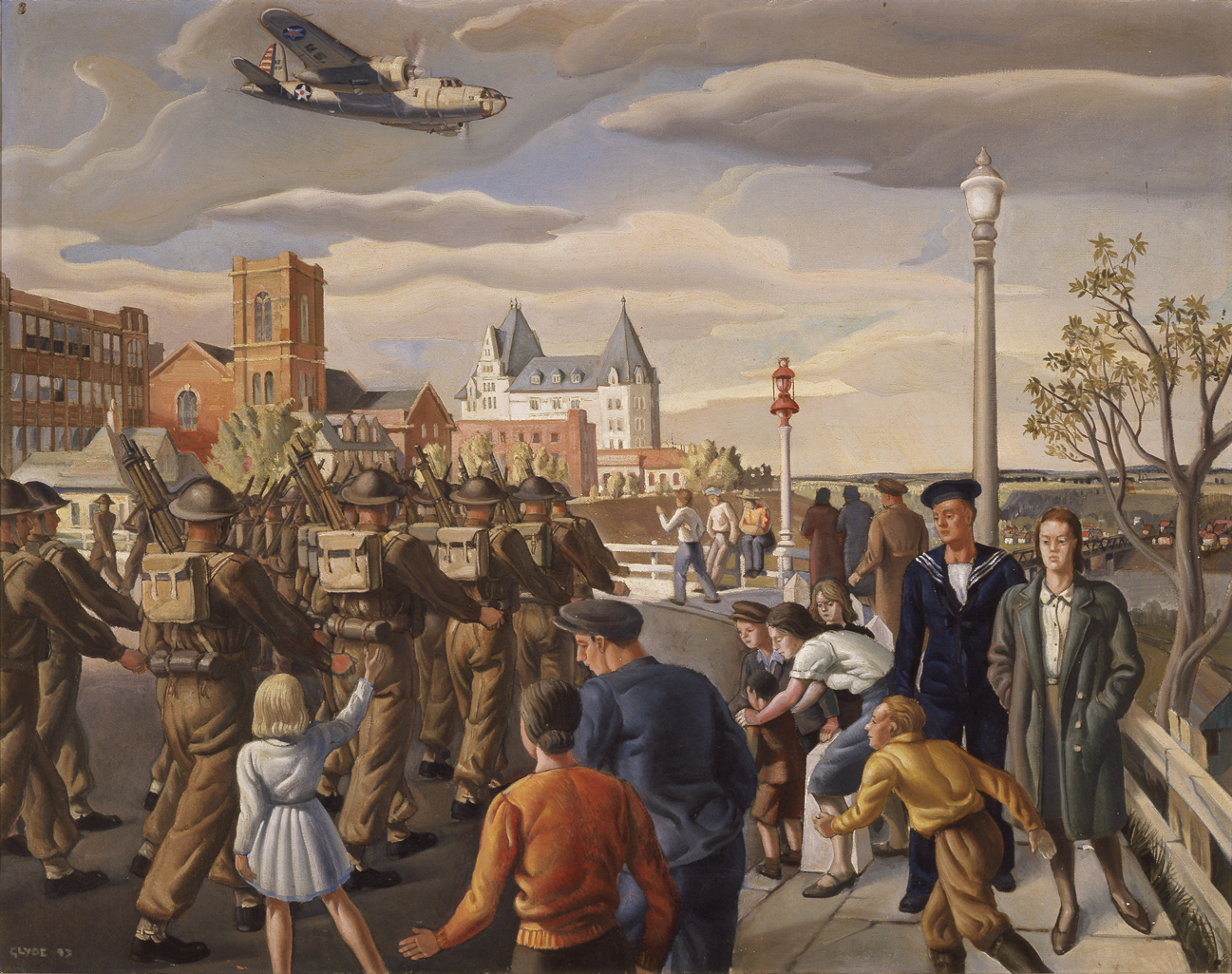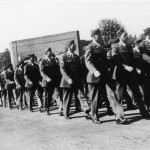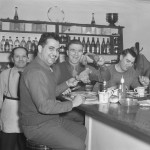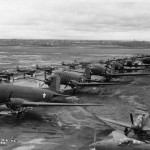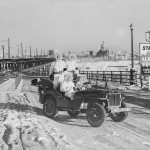When the world went to war again in 1939, Edmonton was an agriculture, coal mining and railway center of 90,000 that supplied northern gold mines. Alaska was an arctic wilderness, sold to the United States for $7.2 million by Russia in 1867. But when the Japanese bombed Pearl Harbor in December 1941, the decision to build the Alaska Highway changed Edmonton and points northwest for all time.
Edmonton became the staging area for three giant projects: the Alaska Highway or Alcan all-weather supply route, the Canol Pipeline to fuel the war effort from Norman Wells to Alaska, and the Northwest Staging Route plan of ten all-weather airports. In all, over 10,000 U.S. soldiers and 38,000 American civilians travelled to the Northwest or resided in Edmonton from early 1942 to the end of the war.
Mayor J.W. Fry cited the American invasion as “exemplary” and the police chief viewed their presence as “excellent” (Coates and Morrison 165). Yet the U.S. ambassador decried that while Canadians had “a strong will to cooperate,” American “men in uniform are racing around in jeeps . . . often with girls” (Coates and Morrison 164). In the three years of American presence, the newspaper reported that between 500 and 2000 city girls married Uncle Sam’s boys, sometimes at a rate of eight per week (Edmonton Journal, 26 Sept 1945). American GIs met girls lined up outside dance halls and bought their tickets to escort them past the doorkeepers, who did not admit unaccompanied ladies. At the Scona rink, soldiers and girls skated around the band situated at center ice and then changed to moccasins or socks for a dance on the ice afterward. American engineers also brought their wives and families, and some of those American daughters ended up marrying Edmonton sons.
The huge influx of men and families created housing shortages, which spurred the construction industry. Building permits tripled from the year before, and some touted Edmonton as the “Young Chicago of the North” (Edmonton Journal, 28 Nov 1942). Hotels, completely filled, allotted sleeping space in their lobbies. Because office space was scarce, the army took over the Empire Theatre, Government House, the basement of the First Presbyterian church and, among others, the historic home of Edmonton Bulletin’s Frank Oliver. Once, bad weather grounded a hundred pilots so they were billeted in private homes. Such a contingent of foreign nationals also required its own two-hundred-strong military police, since U.S. soldiers were beyond the jurisdiction of the RCMP.
The Americans hired one-quarter of Edmonton’s workforce by the end of the war, when unemployment dropped to zero. They paid civilians well, sometimes double. They also had access to the Post Exchange store, or PX, where chocolate bars, unavailable in local stores, sold for four cents apiece.
Besides taking over “beer parlors, cornering all available girls, stripping stores by sending furs and English china home” (MacGregor 281), American soldiers came to the rescue one November day when almost twenty inches of snow fell on Edmonton. The U.S. Air Force promptly scraped, loaded and trucked away snow from the main streets. Only seventy miles of Edmonton’s 400 miles of streets were paved at the time.
Perhaps the most visible effect of the American invasion was the airplanes. The Americans transformed Blatchford Field into the busiest airport on the continent. They also built the satellite Namao airfield, boasting 7000-foot runways and steel mesh extensions to handle the volume of air traffic. In addition, Edmonton hosted international pilots in the Commonwealth Air Training Plan, owing not only to the clear prairie skies but the presence of skilled bush pilots and WWI vets as instructors.
Consolidated Liberty B-24 bombers, P-40 Warhawks, Mauraders, Bostons, Douglas C-47s and C-54 transport planes thrilled sky watchers. Fifteen hundred lend-lease P-39 Bell Aeracobras rained down on Blatchford to be ferried away by male and female Russian pilots. DC-3s with the white star of the U.S. Army, and yellow training planes—Tiger Moths, Ansons, Oxfords and Harvards—soared the blue. One June day, 500 planes took off for Alaska, the same month the Japanese attacked the nearby Aleutian Islands. On another single day, 860 planes landed at Blatchfield. Edmonton boys bought fur-trimmed parkas and fleece-lined flying boots from the Army & Navy surplus store to dress like the fliers.
While New York Mayor LaGuardia, on a visit to meet with the Joint Board of Defence, opined that Edmonton was “a most attractive city from the air” (Coates and Morrison 162), Americans on the ground “leaned over backwards to be agreeable” (MacGregor 266) and many returned to live in Edmonton after the war. The mystique of the Alaska Highway continues to draw Americans up the 1523 miles from Edmonton to Fairbanks. The road was opened to the public after being turned over to the Canadian government for upgrading to civilian standards after the war.
The Alaska Highway, built in fear and haste by the U.S. army in eight months, provided evidence that North America was secure from invasion and demonstrated a feat of unparalleled cooperation between two countries. But it also disrupted Indigenous peoples, wildlife and habitats, and exposed the need for study and consultation. It also led to an ecological consciousness of the north, of its environment and populations and, ultimately, an understanding that wilderness is finite and fragile.
After three years, the increased density, prosperity and excitement of the American presence in Edmonton was over. When the Americans pulled out, they left behind warehouse and recreation buildings, an improved airport and the Namao runways, a telephone line from Edmonton to Alaska, cheap army surplus goods and a 250-bed military hospital. War veterans returned, some with British war brides, and the city settled into postwar adjustment. But it wasn’t long before the next bonanza. In 1947, oil was discovered at Leduc, and Edmonton boomed again.
Works Cited:
Coates, K.S. and W.R. Morrison. The Alaska Highway in World War II. Norman, OK: U of Oklahoma Press, 1992.
MacGregor, J.G. Edmonton: A History. Edmonton: Hurtig Publishers, 1967.
© 2016 Katherine Koller

